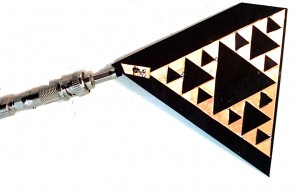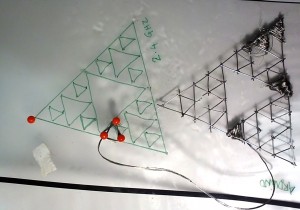So, now we know that in order to build the sensor we need an antenna and RF amplifier piece, but first we need to specify what bandwidths we are talking about, in order to specify our selection. I chose to go for apps from 500Mhz to 3~5 Ghz, given that that is what most of the current technologies depend on, and so they do have lots of ambient presence. The web is full _FULL_ of tutorials on how to build an emf sensor with arduino, and using a piece of wire as a probe. Well, it is definitely sensing something, probably some low frequencies and noise, but this is not accurate and isn’t what we are looking for. There is another piece that is trending all over the web, which was first tried by a German researcher in a media lab in Cologne, then virally continued to expand, it is currently being used by Google data labs and is also being part of other interesting research with mobile apps. The good things about this chip is that it is not difficult to implement, but the cons are that it is not very accurate (its sensitivity is -60 dbm, while we need -110 dbm). In general, there is no current available RF chips that has sensitivity over -75dbm for frequencies above 1Ghz. So, the sensitivity issue will always remain a problem, for now. There are solutions for increasing the dynamic range to -95dbm using different amplification, but still, we will missing the remaining power difference.
I built the sensor chip and tested it, in order to get a sense of how data would look like and how sensitive it is. I tested with different antennas for 2.4 Ghz (which is Wifi Frequency), well, the fractal antenna seems to do better, but still, nothing is incredibly sensitive.
So this is a video of the sensor working with a wire loop antenna for 2.4GHZ.
And my story with fractal antenna goes long:



